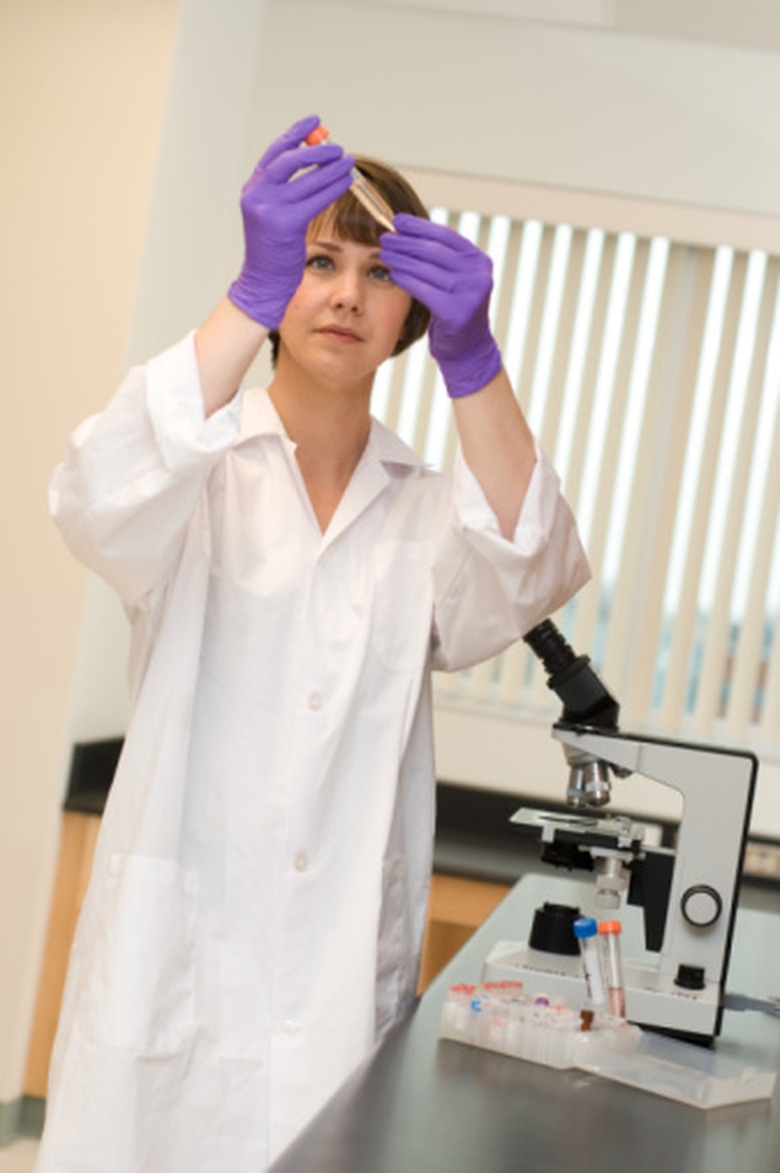Types Of Observation In The Scientific Method
The scientific method consists of a series of steps used by scientists to conduct experiments. The word "observation" has two meanings in the scientific method. First, there is the scientist's observation of the world as it leads to hypothetical theory. This is the first step of the scientific method and can be presented in two ways, either as a natural observation or a staged one. Second, in the collection of data in an experiment using the scientific method, there are two types of observations, qualitative and quantitative.
Observed Naturally
Observed Naturally
When a scientist sets out to prove something using the scientific method, he must first observe something in the natural world. For instance, Sir Isaac Newton theorized that there was a force called gravity after he watched an apple fall from a tree. This would be a natural observation. Newton saw something happen in nature without any intervention on his part or the part of anyone else. This type of observation means the scientist will watch and wait for the event to happen during an experiment.
Staged Observation
Staged Observation
If Isaac Newton had come up with his theory of gravity after dropping an apple from a balcony, his observation would be characterized as staged. Many experiments begin with a scientist thinking "what if" — e.g., "What if I drop this apple from a balcony? What will happen?" In this form of observation the scientist creates a hypothetical theory from thinking about something in nature, intervening in nature and observing the event. This type of observation generally dictates that the experimentation that comes from the observation will have to be recreated.
Quantitative Observation
Quantitative Observation
In the scientific method, after a scientist comes up with a theory based on an observation of something in nature, she starts an experiment. Once the experiment is underway, it must be observed. The scientist records the observations of the experiment and collects data. One form of data collection during the method is quantitative. This form of observation during an experiment employs mathematical models and relies on the scientist to collect information based on numbers, such as how many apples fell from a tree or balcony. Quantitative observation is common in physics, biology and the natural sciences.
Qualitative Observation
Qualitative Observation
When a scientist performs an experiment that requires observations concerning the quality of what has happened in an experiment, it is considered a qualitative observation or data. Examples include the shapes of the apples that fell from a balcony or tree or what happened to them when they fell. Qualitative observations can be easily dismissed in experiments that require hard mathematical data, but they are made nonetheless. Qualitative observations can be very important in experiments that require interpretation.
References
- "The Complete Idiot's Guide to the Science of Everything"; Steve Miller; 2008
- "Science Made Simple"; The Scientific Method
Cite This Article
MLA
Francis, Daniel. "Types Of Observation In The Scientific Method" sciencing.com, https://www.sciencing.com/types-observation-scientific-method-8295233/. 24 April 2017.
APA
Francis, Daniel. (2017, April 24). Types Of Observation In The Scientific Method. sciencing.com. Retrieved from https://www.sciencing.com/types-observation-scientific-method-8295233/
Chicago
Francis, Daniel. Types Of Observation In The Scientific Method last modified August 30, 2022. https://www.sciencing.com/types-observation-scientific-method-8295233/
